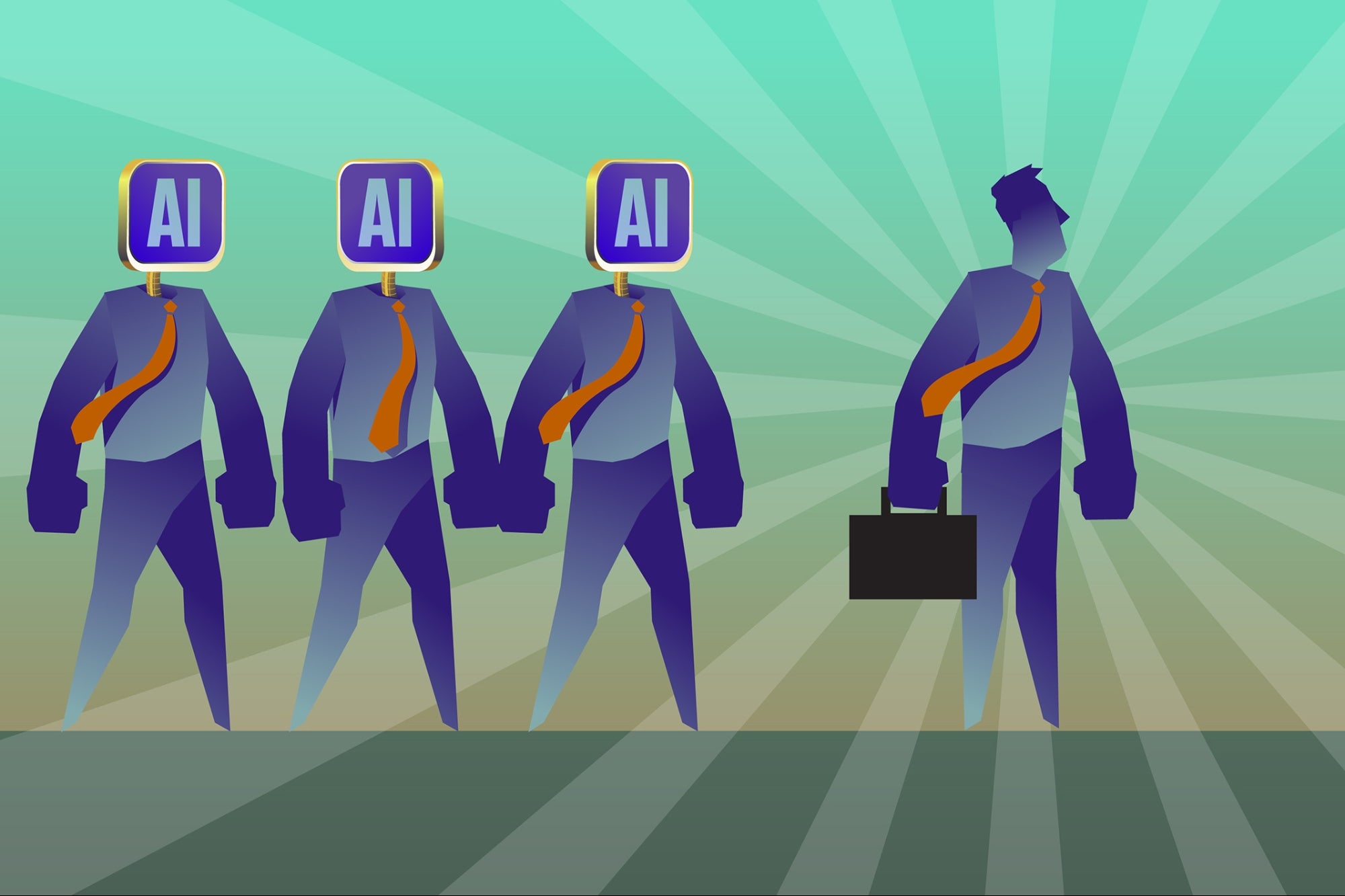Opinions expressed by Entrepreneur contributors are their own.
You’re all-in on AI. Your team? Not quite there yet.
You’ve tested the tools, seen the potential, maybe even scored a few quick wins. But turning that into confident, consistent use across your company? That’s a different story.
From my conversations with fellow leaders, I know this gap is common. Even with access to powerful tools, teams often hesitate – or sometimes outright resist – embracing AI in their workplace. A BCG report confirms it: most AI adoption challenges stem from people and processes, not the technology itself. Hence, the main hurdle remains the readiness of your team to use innovative tools and solutions.
The good news is that this problem can be solved. A thoughtful strategy can turn AI into a natural part of your team’s daily work. Below, I’ll outline the most common obstacles I’ve seen and share practical ways to help your team build confidence around them.
The real barriers to AI adoption
AI is everywhere nowadays, but many teams are still unsure how to put it to work. In my experience, the majority of AI adoption challenges arise from a few recurring obstacles that stop interest from becoming action:
- Unclear relevance. Most employees don’t see how AI applies to their daily tasks. The benefits sound promising, but without a clear link to their responsibilities, it’s hard to see the point. Generic advice like “automate tasks” or “save time” only adds confusion — teams need concrete, role-based examples to know where to begin and how it adds value.
- Lack of support. Even when teams are excited about AI, they’re often left on their own, without onboarding, training or shared resources. This leads to isolated experiments, inconsistent use, duplicated effort and missed chances to learn from each other.
- Fear around AI. Many employees lack confidence in using it. Unclear boundaries, fear of mistakes, especially in sensitive contexts and worries about job security often result in resistance to AI altogether.
Related: How to Successfully Implement AI into Your Business — Overcoming Challenges and Building a Future-Ready Team
Three proven steps to overcome AI adoption challenges
However, these blockers aren’t fixed. With the right strategy in place, teams can go from hesitant to confident without needing a huge overhaul. Here’s how to create the kind of structure that makes AI part of the daily workflow.
Provide AI training that makes sense
If you want your team to embrace AI in the workplace, you need to start with training that’s practical, clear and aligned with how people actually work.
When choosing a training, consider:
- Clarifying what AI is. Skip jargon and focus on how it works in your company’s context. Practical, real-world examples go a long way.
- Breaking myths. Misconceptions like AI being a threat to jobs or always delivering flawless results can quietly undermine adoption. Address them head-on and set realistic expectations about what AI can and can’t do.
- Making it role-specific. Show how AI supports the specific responsibilities of each role. Demonstrate how it can help with familiar tasks, so it feels like a natural extension of their work.
To make the experience more engaging, personalize it. Tailor prompt libraries to different departments — marketing, HR, operations — so teams can explore use cases that reflect their daily tasks. This makes AI easier to grasp and more exciting to try out.
PwC is a great example of what this can look like in action. They launched an AI Academy that’s already trained 90% of their employees in prompt design and responsible AI use. Their focus on trust, accessibility and hands-on application has helped teams adopt AI more confidently across the board.
Pick an AI partner that thinks beyond technology
Once your team understands AI’s value, the next step is choosing a partner who can scale that vision.
Start by looking at how they develop AI as a skill across teams. Are they actively investing in long-term capability? At Accedia, for example, we run internal AI trainings and initiatives like our Innovation Development Center, where team members can explore real use cases and build practical AI experience.
Equally important is a partner’s ability to grasp your business context. The right one invests time in understanding how your organization works, offering dedicated delivery leads who collaborate with your team, ask the right questions and tailor solutions to specific needs.
Finally, the right provider helps you map out where AI will drive the most value and where it may introduce risk. They align efforts with organizational goals, highlight high-stakes decisions and ensure AI is implemented in a responsible, context-aware way.
Related: AI Isn’t Plug-and-Play — You Need a Strategy. Here’s Your Guide to Building One.
Make AI part of work culture
The way your company approaches innovation directly shapes how easily AI is adopted. When it is encouraged across teams, people feel more comfortable experimenting. Here are a few ways beyond frequent communication I’ve tried in my team to support that mindset:
- Encourage cross-team collaboration. Eliminate organizational silos by bringing people together to work. Sharing knowledge and solving problems side by side leads to fostering new ideas and very often, better results.
- Let people follow what excites them. By supporting AI initiatives outside day-to-day tasks, you give your team space to explore what genuinely excites them, which often sparks new ideas and brings unexpected value to the business.
- Make innovation everyone’s job. Avoid letting it live only in one team. Consider forming a small group of “innovation ambassadors” who can help spread ideas, answer questions, and inspire others to get involved.
Conclusion
Successfully navigating AI adoption challenges means creating an environment where employees understand how technology enhances their roles, receive training to use it confidently, and view innovation as a shared responsibility. When that happens, AI in the workplace stops being a trend and starts driving lasting progress. Don’t let hesitation define your company’s future. Lead the shift from resistance to results and turn your team into your biggest AI advantage.
Ready to break through your revenue ceiling? Join us at Level Up, a conference for ambitious business leaders to unlock new growth opportunities.
You’re all-in on AI. Your team? Not quite there yet.
You’ve tested the tools, seen the potential, maybe even scored a few quick wins. But turning that into confident, consistent use across your company? That’s a different story.
From my conversations with fellow leaders, I know this gap is common. Even with access to powerful tools, teams often hesitate – or sometimes outright resist – embracing AI in their workplace. A BCG report confirms it: most AI adoption challenges stem from people and processes, not the technology itself. Hence, the main hurdle remains the readiness of your team to use innovative tools and solutions.
The rest of this article is locked.
Join Entrepreneur+ today for access.








